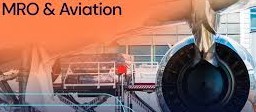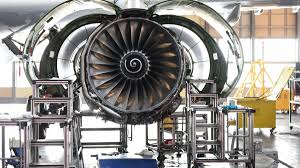My article was published on the Indus International Research Centre website on 05 Mar 25
The aviation Maintenance, Repair, and Overhaul (MRO) industry is poised for significant growth, driven by rising air traffic, ageing aircraft fleets, and advancements in predictive maintenance technologies. Emerging markets, particularly in Asia and the Middle East, present lucrative opportunities as airlines expand operations. However, challenges such as high labour costs, supply chain disruptions, and stringent regulatory requirements pose hurdles to efficiency. Integrating AI, blockchain, and IoT in MRO processes enhances efficiency and cost-effectiveness but requires substantial investment. As airlines focus on sustainability, MRO providers must innovate to support greener aviation while maintaining profitability and operational reliability.
Components of Aviation MRO
Aviation Maintenance, Repair, and Overhaul (MRO) is a multifaceted industry that ensures aircraft remain safe, reliable, and efficient throughout their operational lifespan. MRO is divided into several components, each addressing different aspects of aircraft maintenance. These components are essential for regulatory compliance, operational efficiency, and prolonging an aircraft’s service life. Below is a detailed examination of the key elements of aviation MRO.
Line Maintenance. Line maintenance encompasses routine checks and minor repairs performed at airports between flights. These tasks ensure the aircraft is fit for its subsequent operation and prevent minor issues from escalating into significant faults. Key activities in line maintenance include daily and pre-flight inspections, visual checks, fluid level assessments, and tyre pressure monitoring. Minor electrical and lighting repairs also fall within this scope. Additionally, pilots or ground crew may detect anomalies requiring immediate troubleshooting. Line maintenance is performed frequently—often after every flight—so it is crucial for maintaining continuous airworthiness.
Base Maintenance. Base maintenance involves more extensive inspections and repairs that necessitate taking an aircraft out of service. Unlike line maintenance, these procedures are conducted in specialised maintenance facilities and require significant time. Base maintenance is categorised into various levels, i.e., A, C, and D Checks. These minor to extensive checks are performed at varying periodicities.
Component Maintenance. This area focuses on maintaining and repairing individual aircraft components such as landing gear, avionics, hydraulics, and electrical systems. Many of these components undergo maintenance at specialised facilities. Key activities include overhauling and repairing parts, calibrating avionics, and replacing actuators, pumps, and valves. Depending on the complexity, repair times can vary from a few hours to several weeks.
Engine Maintenance. Engines are among the most expensive and complex aircraft components, requiring specialised maintenance to ensure peak performance. Engine maintenance falls into two main categories. On-wing maintenance includes minor inspections and repairs performed without removing the engine. Off-wing maintenance is more comprehensive repairs requiring engine removal and overhaul in a specialised facility.
Modifications and Upgrades. Aircraft undergo modifications and upgrades to enhance performance, comply with evolving regulations, and improve operational capabilities. These can be categorised into Structural Modifications, Avionics Upgrades, and Interior Modifications.
Technical Record Management. Accurate maintenance record-keeping is vital for compliance and operational transparency. Technical record management includes logging all maintenance activities, tracking airworthiness directives, and ensuring documentation aligns with aviation authority requirements. Effective record-keeping is crucial for aircraft resale value, regulatory inspections, and operational traceability.
Logistics and Supply Chain Management. Efficient supply chain management is essential for ensuring the timely availability of spare parts, tools, and materials. Key functions include inventory management, procurement, and coordination with suppliers. A well-managed logistics system reduces aircraft downtime and enhances cost-effectiveness in maintenance operations.
Ground Support Equipment (GSE) Maintenance. GSE maintenance ensures that essential airport equipment used in aircraft servicing and logistics remains operational. This includes maintaining and repairing towing vehicles, lifts, and power units. Proper maintenance of ground support equipment is vital for seamless airport operations and efficient aircraft servicing.
Importance of Aviation MRO
Aviation Maintenance, Repair, and Overhaul (MRO) ensures the global aviation industry’s safety, efficiency, and reliability. It is an essential aspect of aviation operations that supports compliance with safety regulations, enhances operational efficiency, and contributes to the industry’s overall sustainability.
Safety Assurance. Regular maintenance and inspections help detect and address potential issues before they lead to failures, significantly reducing the risk of accidents. Continuous monitoring and maintenance ensure that aircraft remain airworthy, protecting passengers and crew from potential safety hazards.
Operational Efficiency. Effective MRO operations help minimise aircraft downtime, allowing airlines to maintain their flight schedules with minimal disruption. Airlines can optimise aircraft utilisation through scheduled maintenance and timely repairs, maximising availability and improving profitability. Well-maintained aircraft contribute to overall operational efficiency, reducing unexpected delays and cancellations.
Cost Management. Proactive maintenance prevents costly emergency repairs by addressing potential issues before they escalate. Lifecycle management through proper MRO practices extends the lifespan of aircraft and their components, delaying the need for expensive replacements. Regular maintenance of engines and aerodynamic surfaces also helps maintain optimal fuel efficiency, reducing airline operational costs.
Reliability and Customer Satisfaction. Ensuring aircraft are ready to fly as scheduled helps airlines maintain high on-time performance, minimising delays and cancellations. Well-maintained aircraft provide a better passenger experience, increasing customer satisfaction and loyalty. Airlines prioritising MRO practices enhance their reputation for safety and reliability, which is critical for customer trust.
Regulatory Compliance and Certification. MRO activities ensure compliance with airworthiness directives and service bulletins issued by aviation authorities and manufacturers. Non-compliance can result in severe penalties, aircraft grounding, or loss of operating licenses. Detailed documentation and record-keeping of all maintenance activities are essential for maintaining an aircraft’s legal airworthiness and passing regulatory audits.
Supporting Technological Advancements. As aircraft technology evolves, MRO practices must integrate new systems, materials, and methods. Maintaining contemporary aircraft models is essential to keep up with advancements in avionics, composite materials, and modern engines. Technicians and engineers require continuous training to adapt to new technologies and maintain industry standards.
Sustainability and Environmental Impact. Regular engine maintenance lowers fuel consumption and emissions, helping airlines meet environmental regulations and reduce their carbon footprint. Efficient MRO practices, such as component reuse and refurbishment, reduce waste and support sustainability initiatives within the aviation industry.
Economic Contribution. The aviation MRO sector employs millions of skilled workers globally, including technicians, engineers, and support staff. It supports the broader aviation industry, ensuring the economic viability of airlines, airports, and aerospace manufacturers. MRO plays an integral role in maintaining a stable and sustainable aviation ecosystem.
Fleet Management and Optimisation. Data analytics enable predictive maintenance, helping forecast maintenance needs, reducing unscheduled repairs, and optimising fleet management. Standardised MRO practices ensure that all aircraft in a fleet meet the same safety and operational standards, simplifying maintenance procedures and reducing training complexity for airline personnel.
Market Competitiveness. Airlines that maintain high maintenance standards gain a reputation for safety and reliability, providing a competitive advantage in the market. Efficient MRO operations also create cost advantages, allowing airlines to offer competitive pricing while maintaining profitability.
Challenges in Aviation MRO
MRO providers face challenges due to evolving technology, stringent regulations, workforce shortages, and cost pressures. These factors contribute to the growing difficulty in maintaining seamless operations while ensuring compliance and cost-effectiveness.
Regulatory compliance is one of the most significant challenges in the aviation MRO industry. The sector is governed by strict regulations related to safety, airworthiness, and environmental standards. Compliance with these regulations demands continuous monitoring, frequent audits, and substantial financial investment. Additionally, rules are frequently updated, requiring MRO providers to adapt swiftly to airworthiness directives and service bulletins, increasing the complexity of operations.
Another major challenge is technological advancements. Modern aircraft are increasingly equipped with sophisticated avionics, lightweight composite materials, and advanced systems, necessitating continuous upgrades in maintenance techniques. MRO providers must invest in state-of-the-art tools, training programs, and infrastructure to keep up with these changes. Furthermore, integrating digital technologies such as predictive maintenance, big data analytics, and digital twins requires substantial financial investment and technical expertise. Many MRO companies struggle to incorporate these new technologies due to budget constraints and limited skilled personnel.
Another pressing issue is the skilled workforce shortage. A significant portion of the current MRO workforce is nearing retirement, leading to a shortage of experienced engineers and technicians. Attracting younger talent remains challenging as the aviation industry competes with other sectors, such as technology and engineering. Training new technicians to meet the required industry standards is time-consuming and costly. Additionally, as aircraft technologies continue to evolve, continuous upskilling of existing employees becomes necessary, adding to the operational burden of MRO providers.
Supply chain disruptions also pose a serious challenge. Delays in the supply of critical parts and components can significantly affect maintenance schedules and lead to extended aircraft downtime. The global nature of the aviation industry means that parts often need to be transported across long distances, making logistics management complicated. Customs regulations, geopolitical tensions, and transport delays further exacerbate these issues. Additionally, MRO providers must maintain an optimal inventory level to prevent delays while minimising excess stock to control costs.
The industry also faces cost pressures and rising operational costs due to increased labour wages, material costs, and regulatory compliance requirements. Airlines consistently seek cost reductions and negotiate aggressively with MRO providers, resulting in thin profit margins. As a result, MRO companies must find ways to optimise efficiency without compromising safety and quality.
Aircraft grounding and downtime are additional concerns. Unscheduled maintenance can lead to unexpected aircraft groundings, disrupting airline operations and causing financial losses. MRO providers face immense pressure to minimise turnaround times while ensuring thorough safety inspections and maintenance procedures.
Data management and cyber security have become critical challenges with the industry’s increasing digitisation. The aviation MRO sector generates vast amounts of data related to maintenance records, performance analytics, and compliance documentation. Effectively integrating and managing this data is difficult. Additionally, as more systems become digital, the risk of cyber-attacks increases. Protecting sensitive operational data from cyber security threats is essential to maintaining safe and secure MRO operations.
Globalisation and market dynamics further complicate MRO operations. MRO providers operating in multiple regions must navigate varying regulatory requirements, making standardisation difficult. Additionally, competition from original equipment manufacturers (OEMs) such as Boeing and Airbus is growing as these companies expand their MRO services. Market volatility, driven by economic cycles, geopolitical events, and crises such as the COVID-19 pandemic, also affects demand for MRO services.
Another challenge is the push for sustainable practices. Increasing pressure to reduce emissions and comply with environmental regulations affects how MRO providers operate, particularly in the handling and disposing hazardous materials. The emergence of green technologies, including electric and hybrid aircraft, presents additional hurdles, requiring new skills, tools, and infrastructure adaptations.
Significant infrastructure investment is necessary to accommodate newer aircraft and technologies. Many MRO facilities require upgrades or expansions to maintain competitiveness, which demands substantial financial resources. Additionally, as global air travel demand rises, MRO facilities face capacity constraints, leading to increased operational costs and potential delays.
Finally, customer expectations continue to rise. Airlines demand faster turnaround times to minimise aircraft downtime and improve operational efficiency. MRO providers must balance speed with quality and safety standards, often in a cost-sensitive environment. Meeting these expectations while maintaining profitability is a constant challenge.
Trends in Aviation MRO
The aviation maintenance, repair, and overhaul (MRO) industry is continuously evolving and driven by technological advancements, changing regulatory environments, and shifting market demands. Several key trends shape the aviation MRO landscape, influencing how service providers adapt to new challenges and opportunities.
One of the most significant trends is digital transformation and data analytics. Airlines and MRO providers leverage predictive maintenance, which uses real-time data from aircraft systems to analyse performance and detect anomalies before issues arise. This reduces unscheduled repairs and improves aircraft availability. The Internet of Things (IoT) enhances real-time monitoring of aircraft components through sensors, enabling proactive maintenance and greater operational efficiency. Additionally, digital twin technology is being adopted to create virtual models of physical aircraft, allowing real-time simulations and performance analysis to optimise maintenance strategies.
Sustainability initiatives are also becoming a crucial focus for MRO providers. Increasing environmental regulations are pushing the industry to adopt eco-friendly practices such as reducing emissions, managing waste, and recycling materials. Green technologies, including sustainable aviation fuels (SAF) and electric or hybrid aircraft, are gaining traction. MRO providers are adapting their services to support these new technologies and assist airlines in achieving sustainability goals.
Another major trend is the increasing reliance on outsourcing. Many airlines outsource maintenance to independent MRO providers to cut costs and focus on core operations. This trend is particularly noticeable in regions where labour costs are lower. Airlines are also forming strategic partnerships with MRO providers and original equipment manufacturers (OEMs) to share expertise and resources, improving service offerings and operational efficiencies.
Cost efficiency remains a top priority for MRO providers. Companies are streamlining operations through process optimisation, lean maintenance practices, and enhanced supply chain management. Effective inventory management strategies, such as just-in-time (JIT) inventory, help minimise excess stock while ensuring critical parts are available when needed.
As technology evolves, workforce development is crucial. MRO providers emphasise training and certification programs to upskill technicians and equip them to handle modern aircraft systems. Additionally, the industry is implementing innovative recruitment strategies to attract young talent by highlighting the aviation sector’s career opportunities and growth potential.
Regulatory adaptations also play a significant role in shaping the MRO industry. Providers must stay ahead of changing safety, maintenance practices, and environmental standards regulations, requiring ongoing investment in compliance programs. Implementing Safety Management Systems (SMS) enhances safety culture and compliance, focusing on proactive risk management and continuous improvement.
The use of robotics and automation is transforming MRO operations. Automated inspections, including drone-based visual inspections of aircraft exteriors, reduce human error and increase efficiency. Automation is also integrated into assembly, testing, and parts replacement processes to enhance productivity and reduce turnaround times.
Cyber security is an increasing concern due to the digitisation of MRO operations. Protecting sensitive data and critical operational systems from cyber threats is essential, and compliance with cyber security regulations requires robust security measures and protocols.
Customisation and modular maintenance solutions are gaining popularity. MRO providers offer tailored services to optimise airline operations and minimise downtime. The trend toward modular components enables easier upgrades and maintenance, reducing aircraft downtime and enhancing flexibility in service offerings.
Globalisation and market expansion are also shaping the industry. The growing demand for air travel in emerging markets, particularly Asia-Pacific, Africa, and Latin America, drives increased MRO opportunities. Cross-border collaborations between MRO providers facilitate knowledge transfer and resource sharing, strengthening the industry worldwide.
Artificial intelligence (AI) integration is another transformative trend. AI enhances decision-making in maintenance planning, scheduling, and resource allocation, leading to more efficient operations. Machine learning algorithms analyse historical maintenance data, identifying patterns to improve predictive maintenance capabilities.
Finally, a strong emphasis on safety culture remains a cornerstone of the MRO industry. Providers are adopting proactive safety management approaches, fostering a culture of safety that encourages reporting and addressing risks before they escalate. Continuous improvement programs based on feedback and data analysis enhance safety practices and operational efficiency.
Conclusion
The aviation MRO industry is an essential backbone of global air travel, ensuring aircraft safety, efficiency, and longevity. Covering key components such as airframe, engine, and component maintenance, MRO services provide airlines with cost-effective solutions, enhanced reliability, and regulatory compliance. However, rising operational costs, supply chain constraints, and skilled labour shortages continue to test the industry’s resilience. Despite these hurdles, emerging trends such as AI-driven predictive maintenance, digital twin technology, and sustainable aviation initiatives are transforming the sector. To remain competitive, MRO providers must invest in innovation, automation, and workforce development while optimising operational efficiency. Additionally, collaboration between airlines, OEMs, and independent MROs will be crucial in navigating regulatory complexities and market shifts. As the aviation industry recovers post-pandemic, the future of MRO lies in its ability to adapt to technological advancements, embrace sustainability, and deliver cost-effective, high-quality maintenance solutions in an evolving global landscape.
Please Do Comment.
Link to the article on the website:-
AVIATION MRO: CHALLENGES AND TRENDS by Air Marshal Anil Khosla (Retd)
For regular updates, please register your email here:-
References and credits
To all the online sites and channels.
Pics Courtesy: Internet
Disclaimer:
Information and data included in the blog are for educational & non-commercial purposes only and have been carefully adapted, excerpted, or edited from reliable and accurate sources. All copyrighted material belongs to respective owners and is provided only for wider dissemination.
References:-
- Aircraft Maintenance & Repair – Michael J. Kroes and James Rardon, McGraw Hill Education, 2013.
- Aviation Maintenance Management – Harry A. Kinnison and Tariq Siddiqui, McGraw Hill, 2012.
- The Global Airline Industry – Peter Belobaba, Amedeo Odoni, and Cynthia Barnhart, Wiley, 2015.
- Kumar, A., & Singh, R. (2020). “Digital Transformation in Aviation MRO: Opportunities and Challenges.” Journal of Air Transport Management, 88, 101865.
- Gupta, S., & Sharma, P. (2019). “Sustainable MRO Practices in the Aviation Industry.” Aerospace Science and Technology, 94, 105401.
- Jones, T., & Miller, C. (2021). “The Role of Predictive Maintenance in Aviation MRO Efficiency.” International Journal of Aviation Management, 7(2), 129-147.
- Oliver Wyman. (2024). Global Fleet & MRO Market Outlook.
- Aviation Week Network. (2024). “How AI and Big Data Are Revolutionizing MRO.” Retrieved from www.aviationweek.com
- MRO Network. (2023). “Challenges Facing the Global MRO Industry.” Retrieved from www.mronetwork.com
- FlightGlobal. (2023). “The Future of MRO: Trends Shaping the Next Decade.” Retrieved from www.flightglobal.com



